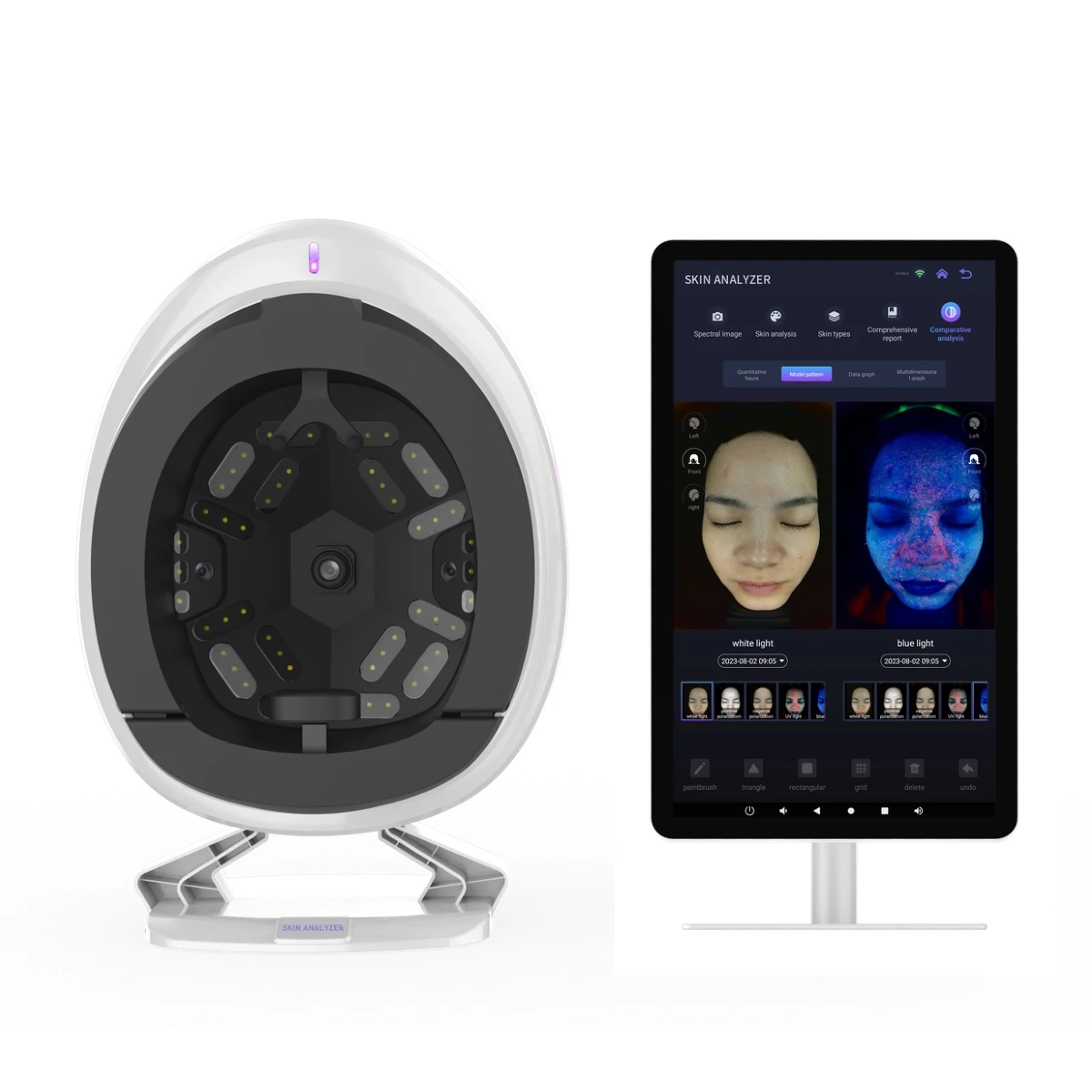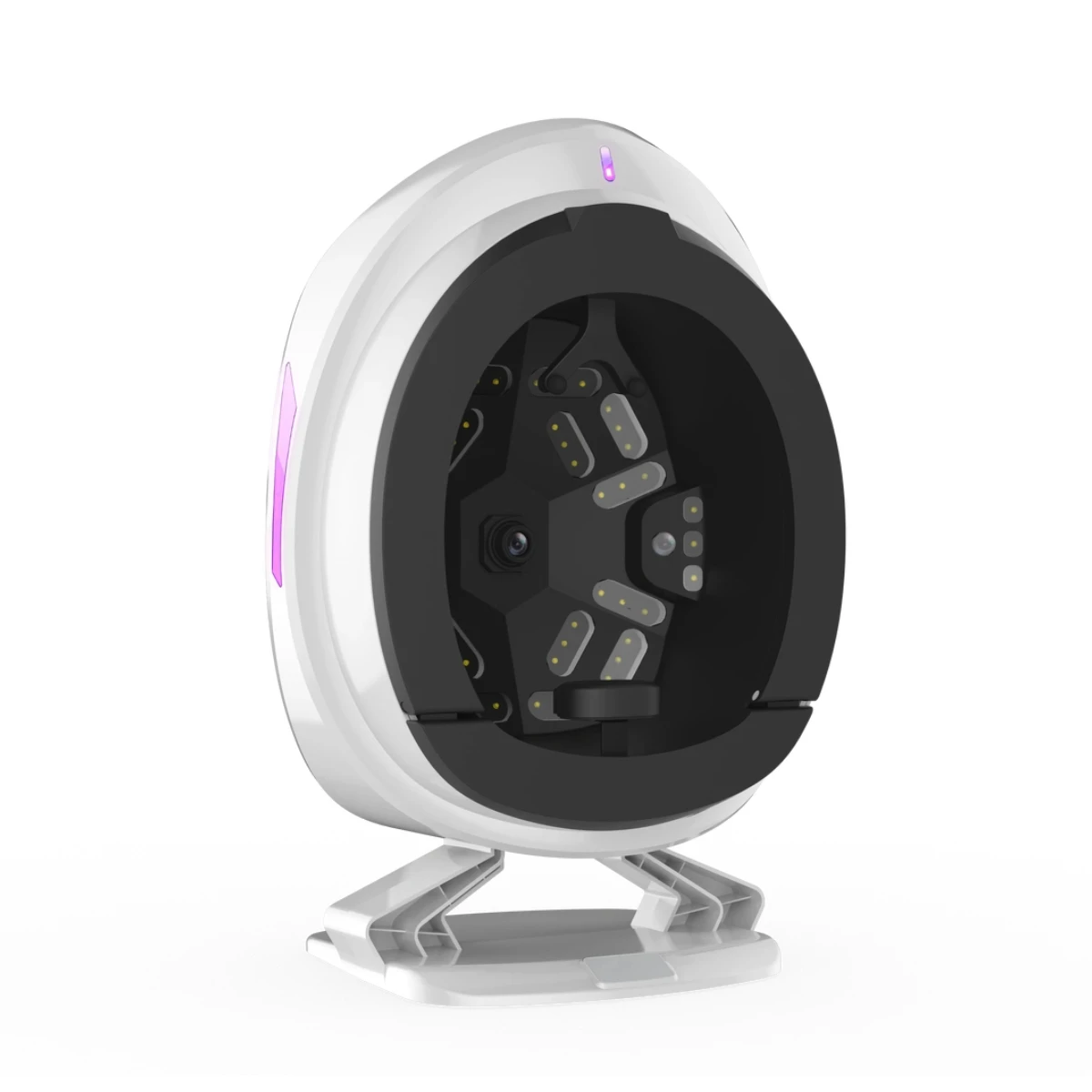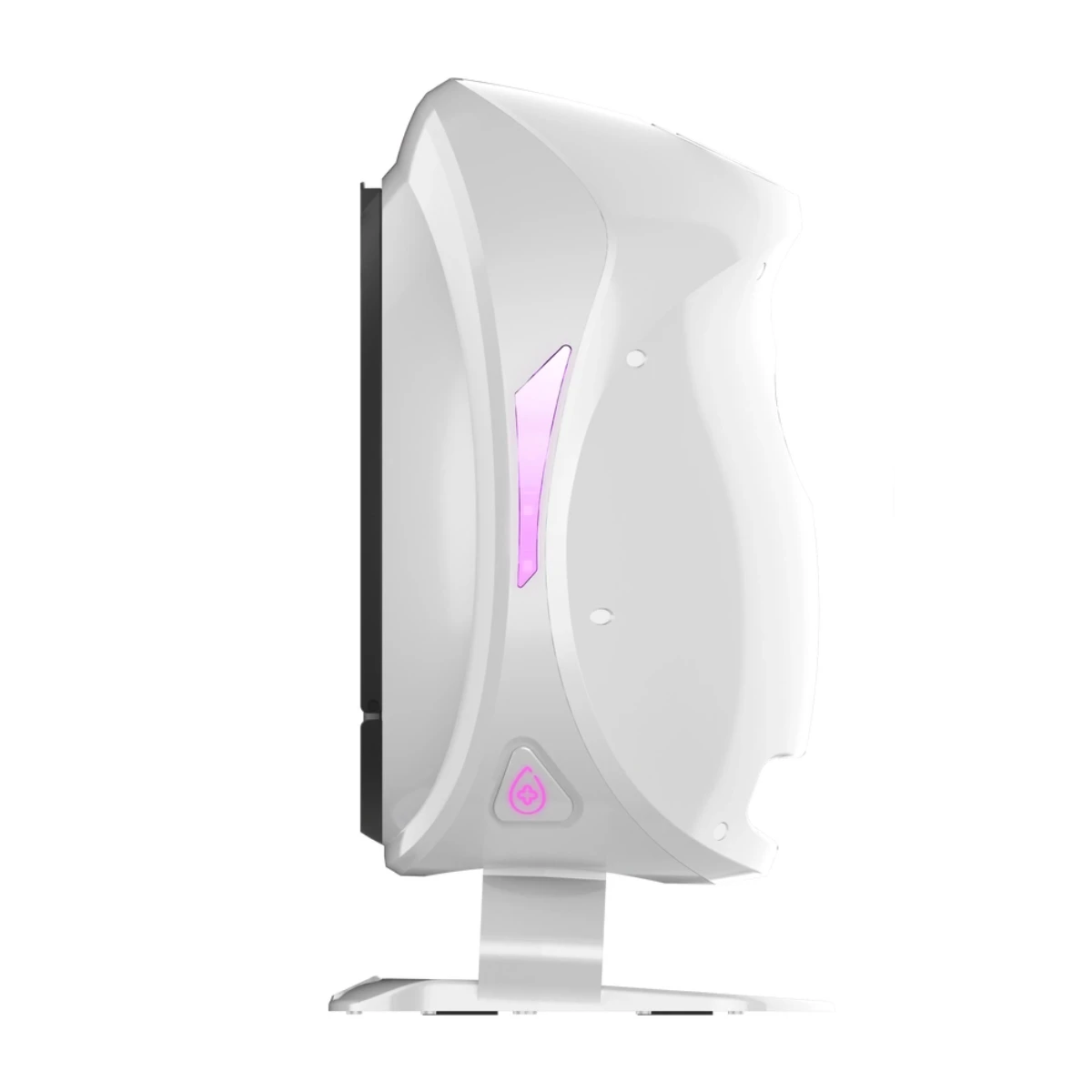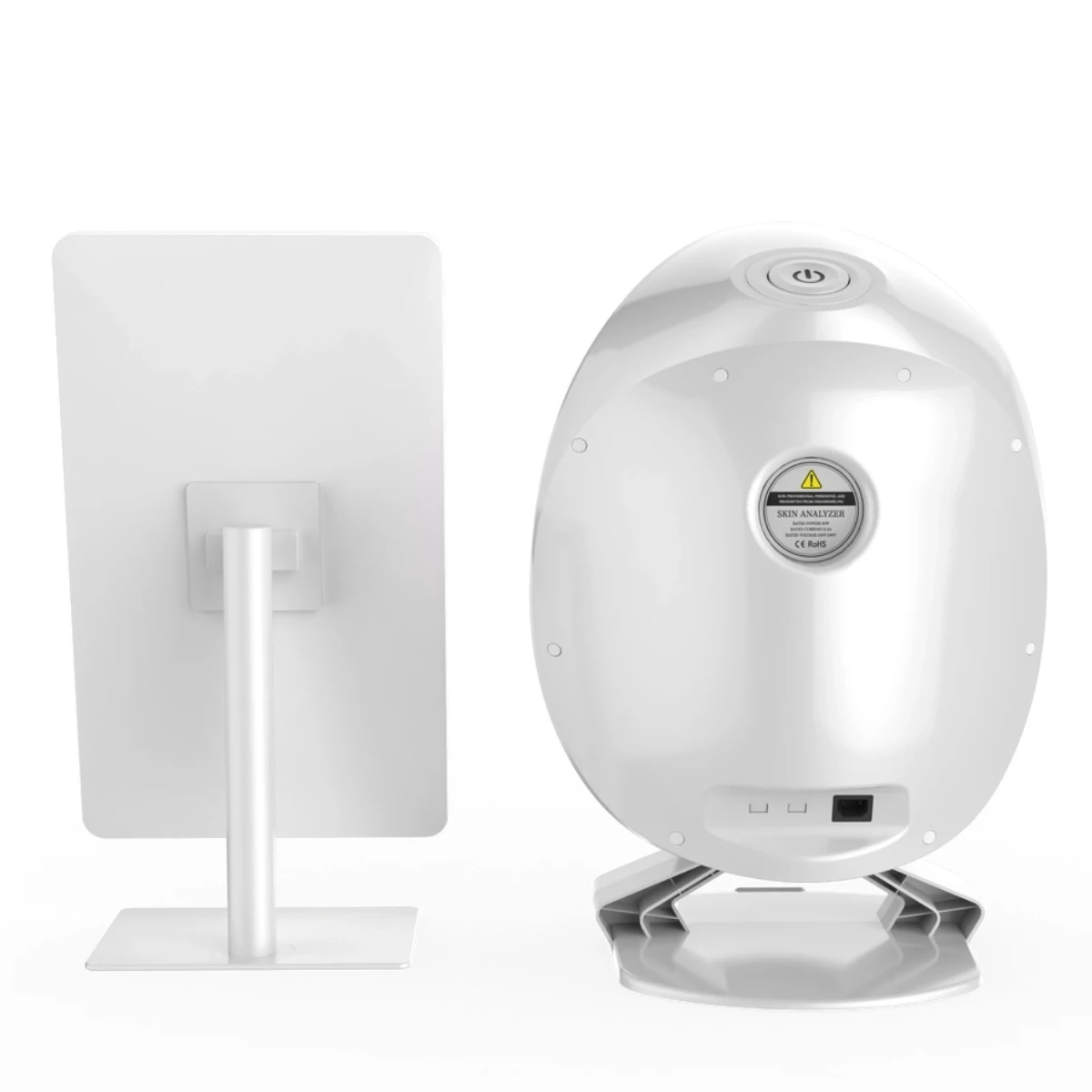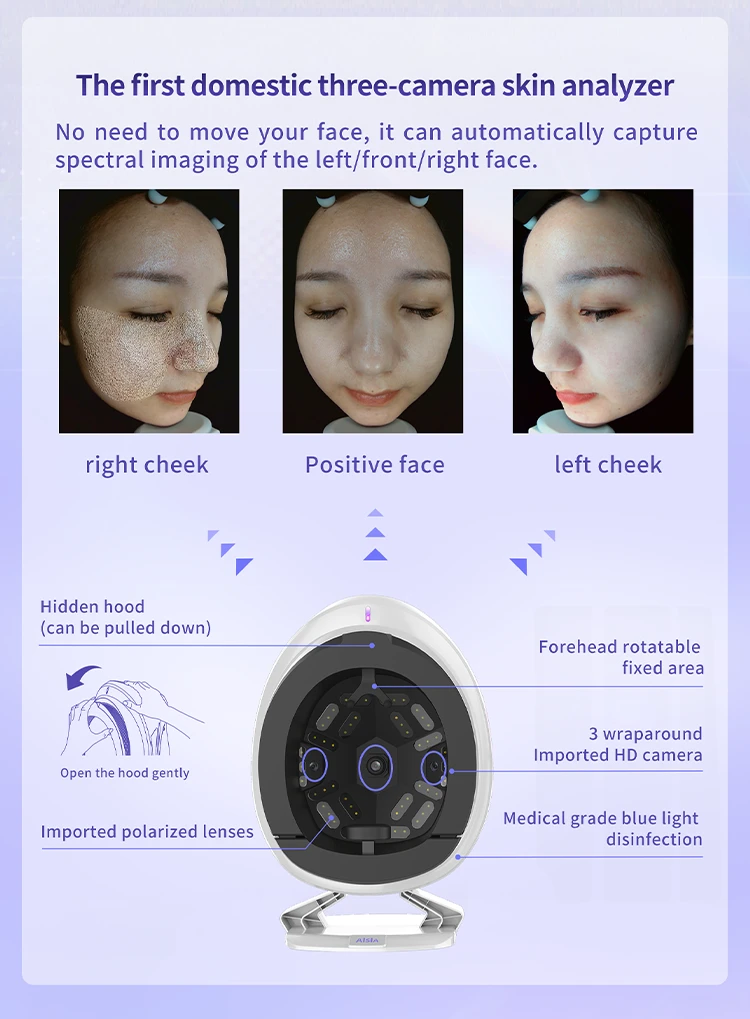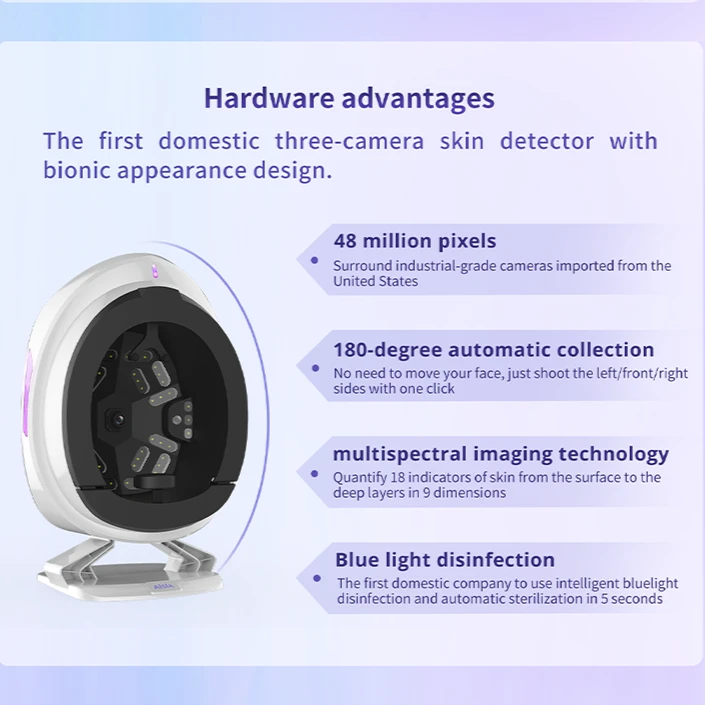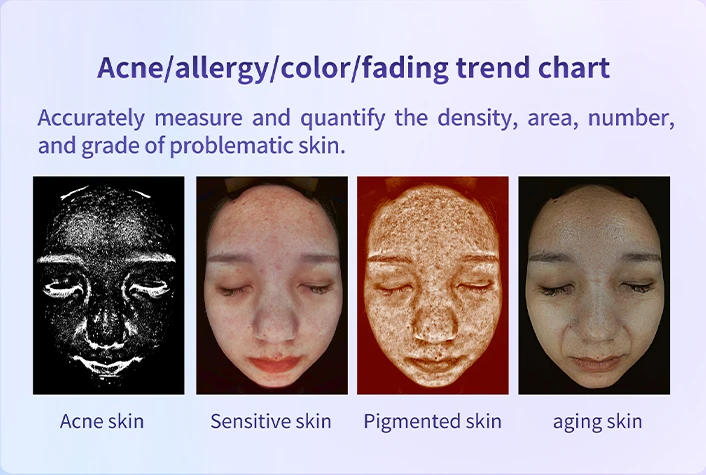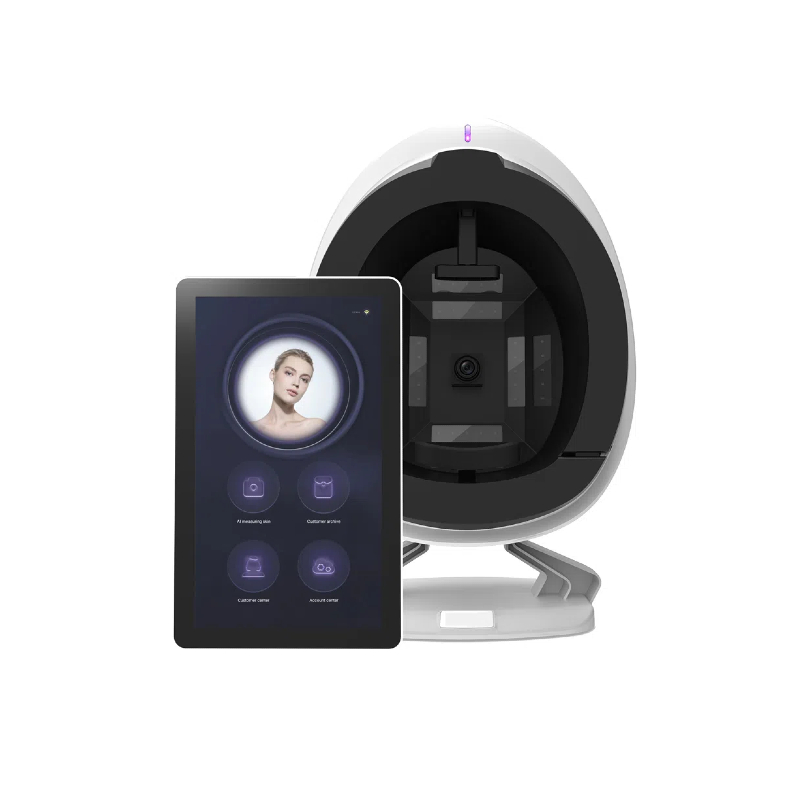Professional 8 Spectral Image Analysis
The skin analysis system uses three industrial-grade high-definition cameras to take full-face photos, and presents facial images through 8 spectra including white light, positive polarized light, negative polarized light, ultraviolet light, blue light, Wu light, brown light, and red light, and analyzes skin issues.
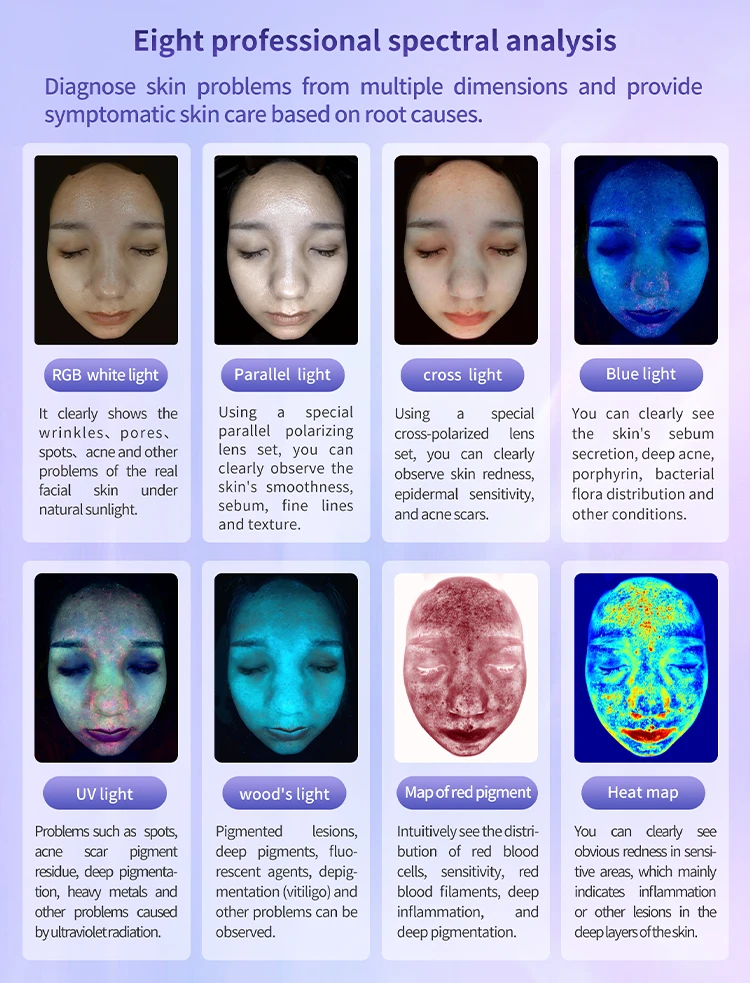
RGB White Light
Under natural light, the sun’s rays are soft and uniform, using multi-directional diffuse light to illuminate the entire face, without shadows, obvious fine lines, and can detect skin color. Wrinkles, pores, spots, and acne can all be clearly seen. Obviously, the facial skin condition under natural light can be used as a basis for overall clinical skin evaluation.
Parallel Polarization
The parallel polarization mode uses a special set of parallel polarizers to reduce the visibility of skin features below the skin surface and enhance the optical reflection of the skin surface, making the skin surface texture clearer. After switching to this mode, you can enhance detail recognition and clearly observe the smoothness, fine lines and wrinkles of the skin. Enhance the display clarity of fine lines and wrinkles, making skin texture easier to distinguish and convenient for AI algorithm calculation.
Cross-polarized Light
The cross-polarized light mode uses a special cross-polarized lens set to effectively directly reflect light, allowing us to clearly observe the microvascular structure hidden under the skin and the bright skin. The characteristics of sensitive skin are more obvious and can reveal irregular skin features.
Blue Light
With a wavelength of 405nm, blue light can harmlessly penetrate the skin under the UV blue light filter. Skin cells and tissues have the natural ability to convert invisible light into visible fluorescence, effectively making the skin a luminous body. Since the light is generated by the skin, rather than a general projection effect. Therefore, sebum secretion, deep acne, porphyrin and bacterial flora distribution can be clearly seen.
UltraViolet Light
The wavelength is 365nm. When ultraviolet light is irradiated under a filter, invisible light can penetrate to the surface of the skin. It is mainly used to observe skin characteristics such as pigmentation, signs of acne, deep pigmentation, and deep pigmentation caused by ultraviolet light exposure.
Wu’s Light
The clinical effect of Wood’s light lies in its special Wu’s pattern of skin reaction, which is used to observe subcutaneous blood vessels and pigment lesions caused by ultraviolet radiation, such as brown spots, erythema, etc., and reveal potential dangers such as chloasma, acne, spider endothelial cell hyperplasia caused by them. Strong light irradiation of fluorescent agents and chemicals will produce strong fluorescence and chemical residual reflection, thereby identifying whether skin care products contain fluorescent agents.
Composite Light/Red Pigment Map
By combining composite spectrum with AI algorithm, we can obtain the red pigment map. The red area is magnified dozens of times, which can more intuitively show the distribution of cells in the blood circulation. Sensitive reactions, red blood streaks, deep inflammation, etc., the characteristics of sensitive skin are more obvious.
Composite Image/Thermal Map
The thermal map generated by the composite spectrum and AI algorithm is mainly for the sensitive reaction of the skin. The sensitive area refers to the area with high hemoglobin content. Usually, in a certain area of the skin or other lesions, the hemoglobin content in the area will increase, and the sensitive area can be clearly seen to have obvious redness.
Synthetic Light/Brown Spectrum
The Brown Map is generated by synthetic spectra and artificial intelligence algorithms. Wood’s generated RBX image analysis technology clearly shows the distribution and deposition of melanin in the skin dermis and analyzes the range of pigmentation caused by melanin (e.g., agglomeration, irregularity, larger slices, acne marks, spots, scars, etc.).
Skin Analyzer Usage Steps
- Clean the face: Cosmetics will seriously affect the accuracy of the results, so you must clean the skin first and gently dry it with a soft towel.
- Patient profile: Enter the patient’s personal data into the computer, including name, age, gender, etc.
- Face shooting: Place your face on the small support of the instrument, close your eyes and do not move, do not have any expression, and flash once on the left, middle, and right sides.
- View the results: The skin analyzer will organize the patient’s skin data and generate a comprehensive skin report, list skin issues, and provide solutions.
Liton Laser Skin Analyzer Parts
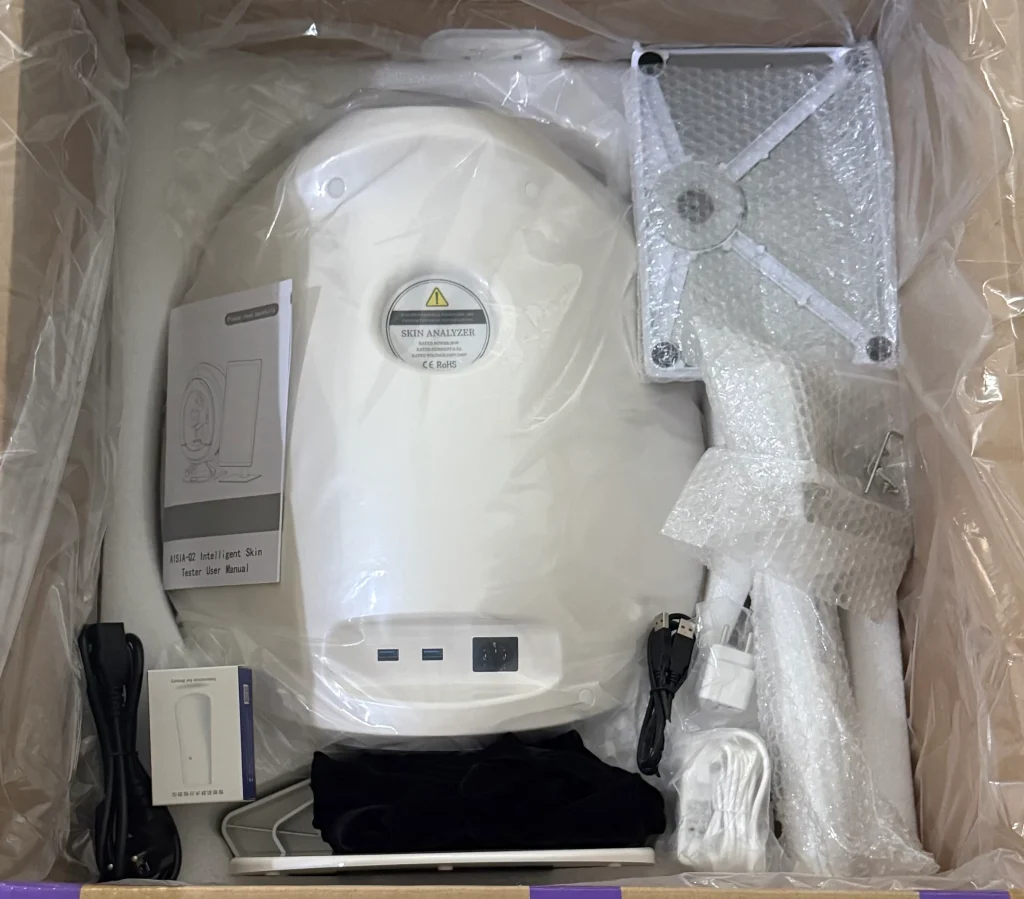
1. Skin Analysis Camera
This is the main part of the skin analyzer, which is used to take photos of the patient’s face and collect data.
2. Camera Power Cord
The skin analysis camera needs to be plugged in, and this power cord is used to connect the camera and the socket power supply.
3. Black Cover
This is the cover installed on the skin analyzer. When the patient uses the camera of the skin analyzer to take pictures, it needs to be used to isolate the external environment so that the subject of the photo is only the patient’s face.
4. Moisture Detection Device
Since taking pictures cannot determine the moisture content of the skin, a moisture detector is needed to assist in analyzing the moisture content of the patient’s skin.
5. Exclusive iPad
The 21.5-inch iPad is used to view the final skin analysis report and show it to the patient, and finally determine the future treatment and improvement plan, which can be connected to the network.
6. iPad Charging Cable
The iPad also needs to be connected to a power source to work, so an iapd power cord is required.
7. USB Cable
Use a 3.0 USB cable to connect the skin analyzer’s camera to an iPad, transfer the patient’s facial skin data from the camera to the iPad, and the iPad generates a professional skin analysis report with the support of network AI data.
8. Skin Analyzer Website
The final report of the skin analysis will show the patient’s treatment method, including skin care products or laser treatment. Doctors and beauticians can log in to the analyzer’s backend website to set up treatment plans in advance.

